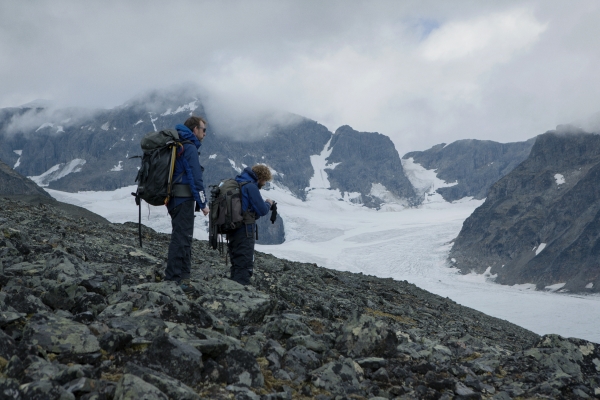
Project Pressure’s Chris Seeley and Klaus Thymann during a recent expedition to northern Sweden. It sounds impossible, but in the coming years, the country’s highest point is set to change…
Towering high above the surrounding peaks of the Scandinavian Mountains in northern Sweden, the peak of the Kebnekaise massif currently stands at 2100m – but it won’t be that way for long. Its ice-covered summit is slowly melting, and will shortly lose its place as the country’s highest point.
“One of the glaciers is currently the highest summit in Sweden, but it has changed over time,” explains glaciologist Per Holmlund, who Project Pressure caught up with en route to a recent expedition in the region. “During the last fifty years, the total mass has decreased significantly, so now it’s much more sensitive to warm summers.”
A glaciologist at the University of Stockholm, Holmlund has been studying the area for forty years – contributing to one of the longest-running glacier mass balance studies on earth. He and his team have produced a rich record of historical images and also the most up-to-date maps available, both of which Project Pressure used to plan the expedition.
Located inside the Arctic Circle, Kebnekaise has two peaks: the glaciated southern peak which currently stands as the nation’s highest point, and a rocky northern summit. The southern peak’s place in the record books was once a little more assured. Rising to 2125m feet in historical records, it easily beat its 2097m little brother to the title. Now, though, with changes to the glacier’s mass, the icy crown of Sweden is slowly sinking.
“In the beginning of the 20th century we believed that it was up to something like 2125m but then it started to decrease in elevation. By mid-century it was around 2120m and during the last forty years it has been undulating with a frequency of about ten years. Now, during the 21st century, it has dropped down another ten metres. It’s a very obvious decreasing trend.”
As Holmlund points out, the rock beneath the glacier only reaches up to 2060m, so if it becomes completely ice-free it will actually be demoted to the fourth highest peak in the country. Beyond just an interesting footnote for the record books, Sweden’s melting mountain stands as powerful symbol of the way the planet is changing.
“It’s very difficult to tell exactly when the change will occur,” concludes Holmlund, “but over the last ten years or so the decreasing trend has been in the order of a half metre per year. If we have some snow-rich winters and cold summers it will delay the changeover, but within ten years it’s likely to happen.”
Image: Project Pressure’s recent expedition to Sweden
